Digital Twin Showcase: Opportunities for the Space Industry
Mark Hennen

Introduction
The UK space industry continues to grow, generating an estimated £16.4 billion turnover per year. It also employs over 45,000 people across a national space ecosystem of diverse roles in Earth observation (EO) and satellite technology (Fig. 1).
Through the National Space Strategy (NSS) the UK government has recently committed to facilitating further growth for the UK Space industry; building on existing excellence in science and technology, to deliver one of the most innovative and commercially attractive space economies in the world.
Digital twin technology will play a significant role in these ambitions. In 2020, the digital twin market was valued at USD 3.1 billion, by 2026 its market share is speculated to rise sharply to USD 48.2 billion [1].
As the use of digital twins expands into new industries, researchers and industry analysts are beginning to recognise the benefits of what EO data can deliver for this technology. EO usage in digital twin analysis has opened the following new commercial and research opportunities in multiple areas of the UK space industry:
- Satellite technology.
- Remote sensing science.
- Data management.
In this final blog in our digital twin series, we explore how recent initiatives and advancements in technology create opportunities for innovation and collaboration; maximising the full potential of the space and digital twin industries.
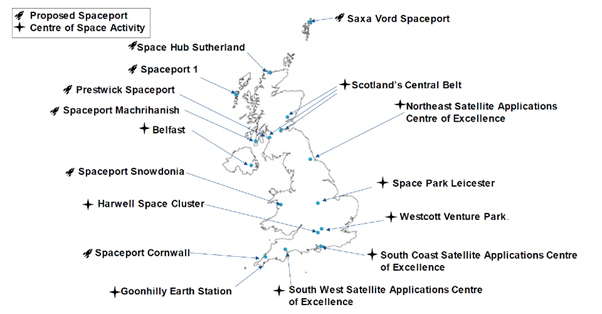
Figure 1: UK Space Ecosystem of centres of space activity and proposed new spaceport launch facilities. Source National Space Strategy
Opening New Frontiers with Satellite Technology
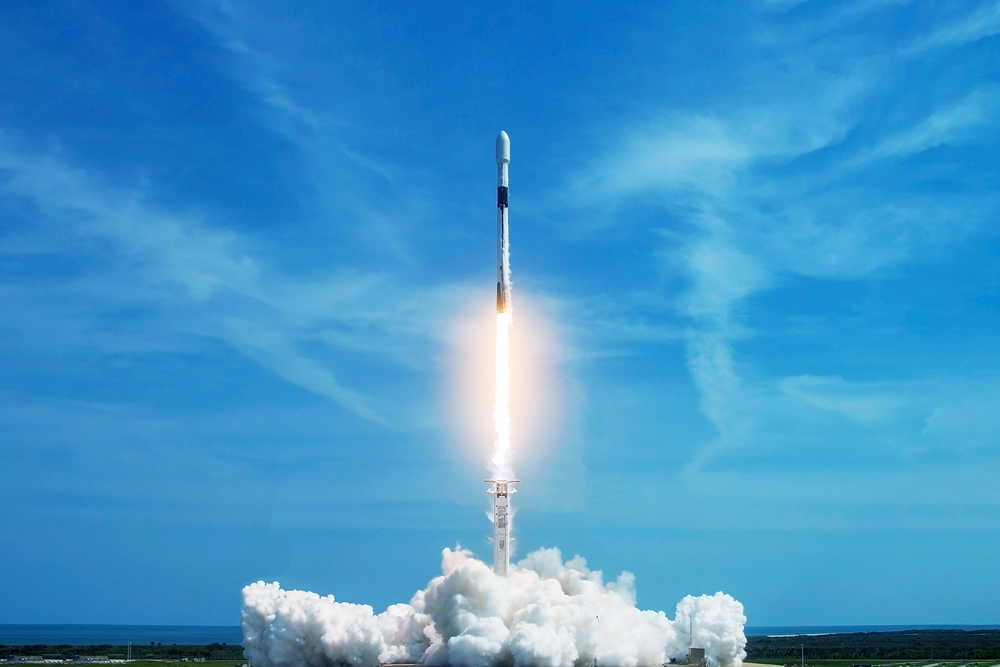
Digital twins need data. The ability of a digital twin to effectively monitor and simulate the functionality of the real world relies upon a consistent and timely flow of relevant real-time data.
In this area, EO data offers a unique opportunity. With over one thousand operational EO satellites currently in orbit, EO data offer frequent, consistent, and unbiased measurements of any location on Earth, no matter how remote.
We have entered a new era of EO. Recent innovations, reduced launch costs and an expansion of commercial space activity have brought a significant increase in the number and variety of satellite systems.
Space is no longer reserved for large, expensive, protracted state sponsored missions. Commercial competition has driven cost saving innovations in satellite construction and launch capabilities.
Rapid launch cadence, ride share capability, and improved technology have added increased agility to the industry. Experimental and operational satellites can be launched quickly and cheaply, providing opportunities for novel EO capabilities.
Constellations of increasingly small satellites (<30cm length) are now operating in distributed space systems (DSS) of more than 100 satellites. These are providing daily images of the entire globe at high spatial resolutions (3 – 5m), global communications and low latency broadband, and continuous air traffic monitoring.
Constellations of agile spacecraft work collectively in fractioned [2] or federated [3] systems, enabling tasked asset monitoring, and providing near-real time geospatial intelligence of specific areas at very high resolutions (>15cm).
As these new technologies continue to mature and the user base increases, new opportunities will continue to emerge. This in turn will drive demand for UK based companies which specialise in launch vehicles (e.g., Skyora), satellite construction (e.g., Airbus, SSTL) and ground support systems (e.g., Goonhily Earth Station), which can be capitalised upon.
Opportunities for Remote Sensing Science
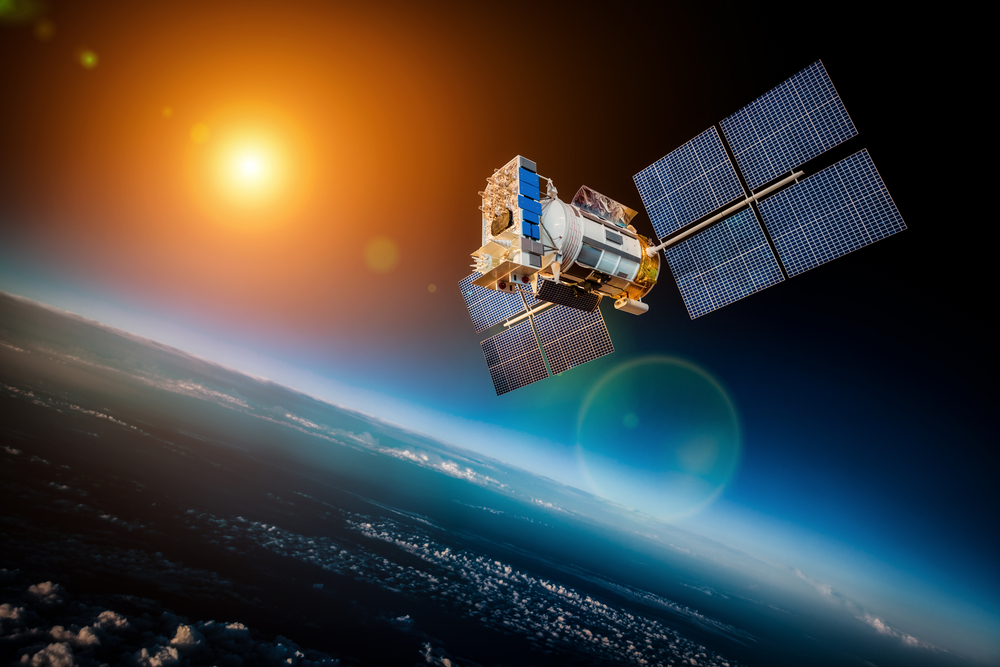
Not since the dawn of the space industry has there been a greater opportunity for innovation in remote sensing science.
As the globe becomes increasingly digital, the demand for new ways to monitor aspects of the human[4] and natural[5] world has never been higher[6]. With innovations in satellite technology, new sources of data become available, providing more opportunities for research.
In the UK, research institutions and commercial entities strive to advance our capabilities in environmental stewardship or geospatial intelligence using remote sensing science.
In this regard, institutions such as NERC[7] and UK Met Office[8] are looking to seize this opportunity by embracing EO data within a digital framework. These initiatives remove previously limiting factors, such as data provision, access, interoperability, processing, and storage to accelerate the development of novel earth observation applications.
Crucially, within these frameworks we can quickly combine EO data with ground-based observations, allowing us to accurately identify key indicators of environmental and climatological change. This ability allows us to extrapolate information gained from discreet point sources and infer the same information across global scales.
The full extent of these advancements is too numerous to list but includes:
- Pollution monitoring and tracking: EO data can be used to aid clean-up operations on land, at sea, and in the atmosphere, by identifying sources and policing polluters.
- Structural deformation: Identifying millimetre scale structural deficiencies in built assets, including bridges and dams.
- Natural hazard monitoring: Using different sources of remote sensing data to monitor severe storms, identify flooded areas, evaluate the damage, and even detect recent avalanches.
- Environmental Change: Monitoring large-scale changes to the environment, such as globally varying vegetation structures, and how they affect soil erosion or indicate ecosystem services.
- Identifying risk: Advancements in the use of synthetic aperture radar (SAR) data can provide regular monitoring of plate tectonics, identifying areas at risk of subsidence, earthquake, and tsunami.
- Monitoring polar regions: Inhospitable and remote locations typically lack the infrastructure for regular ground-based monitoring. In Antarctica, EO data provide crucial real-world data on the state of polar sea ice. Projects such as IceNet combine EO data with modelled data within a digital twin framework, providing real-time intelligence to aid ice-breaker navigation (Figure 2).
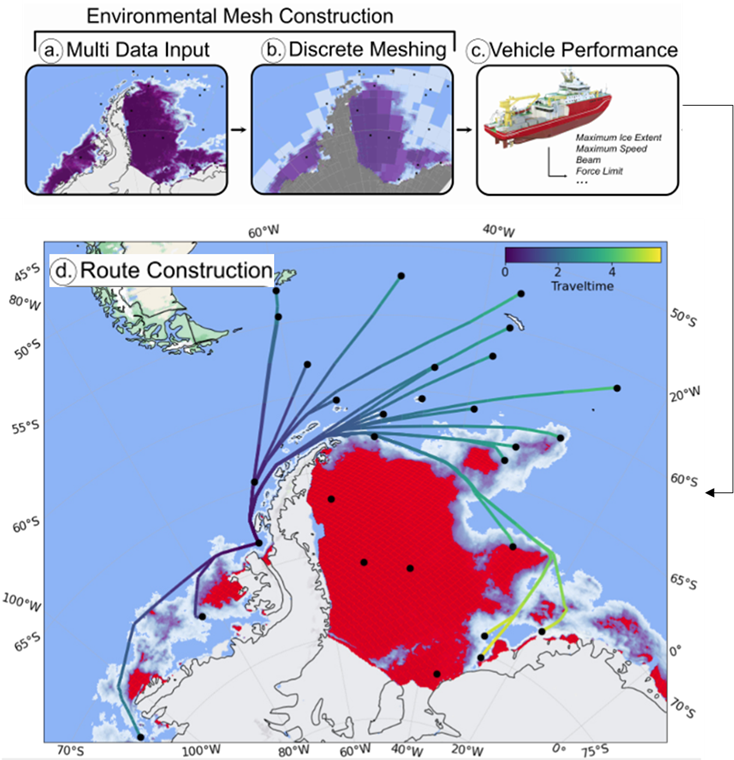
Figure 2: Example navigational routes from a single location at Rothera to possible destinations, with the colour of the lines representing the total travel time in days. The background colourmap of white-purple shows sea-ice concentration in Feb-2014 where the ship will be icebreaking, with the dark red representing areas with concentrations too high for the ship to navigate through. Source: British Antarctic Survey (IceNet)
As remote sensing research capitalise on the increasing capabilities of space data, new commercial opportunities inevitably arise. Bespoke missions, for specific monitoring tasks, such as air pollution or thermal emissions monitoring are now becoming commercially viable; where the industry can develop and react at-a-pace with consumer needs.
Machine learning and data handling
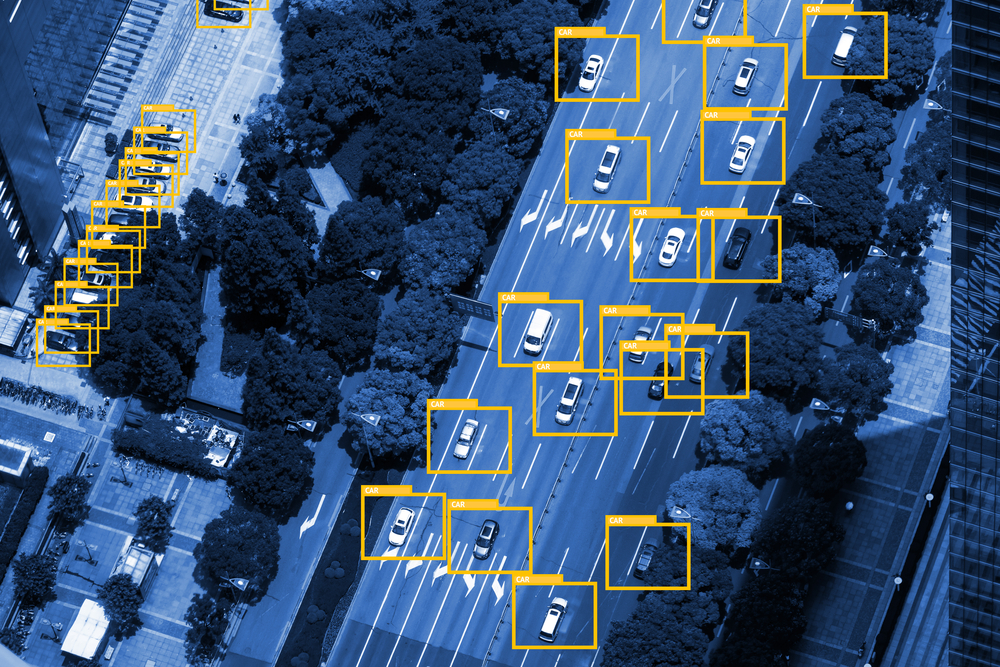
Most applications are only possible due to the use of Machine Learning (ML). ML continues as an expanding field within Artificial Intelligence (AI), whereby computers/algorithms are trained to gather specific information and make decisions.
ML plays an ever-increasing role in everyday life such as recognizing patterns in human behaviour to direct commercial activities, media consumption, and even to correct our spelling.
In fact, ML is critical to the effectiveness of digital twins, performing diagnostics analysis, to identify the cause of any issues in the current state of the system.
In combination with AI technology, ML also helps support decisions, by formulating predictive models, which describe the probability of future change. These outcomes are based on learnt patterns and behaviours in the data, which can be simulated through alternative scenarios, providing intelligence on a preferred course of action.
When combined with EO data, state-of-the-art ML techniques can be used to rapidly identify patterns in our environment, generating new data at a pace that wouldn’t be possible from human interpretation alone.
Their role in EO is extensive, and you can find out more in our whitepaper AI4EO. As the number of EO-enriched digital twins becomes more frequent, opportunities for ML technology emerge in many areas, including:
- Analysis ready data (ARD): The adoption of AI and cloud-based infrastructure has permitted the automatic processing of large amounts of EO data. ARD take raw data transmitted to the ground and applies regular georeferencing, atmospheric and radiometric corrections to efficiently provide rapid and reliable data.
- Specialized EO workflows: As new use cases require a more diverse range of applications, the requirement to automate the processing of disparate data (including ARD EO) into conventional formats and workflows increases. These tasks apply contemporary remote sensing science to ARD, using AI and ML to efficiently replicate derived analyses.
- Segmentation and labelling: The sheer volume of EO data opens the door to an advanced form of ML called Deep Learning. Unlike traditional ML, DL doesn’t require features to be identified and labelled before it can process them. Instead, DL learns much like a hum brain, recognising features through the identification of common patterns (e.g., shape, colour, size) within many unstructured data. This technology removes the reliance on subjective human interpretation, providing a rapid spatial index of features across landscapes, that efficiently allow change detection activities (e.g., updating maps, and monitoring hazards).
- AI enabled onboard processing: A relatively new innovation in EO exploration, which tackles the vast quantities of data required to be transmitted from orbit to the surface. ML payloads segment and vectorise imagery (e.g., building footprints, flooding extent) in orbit, transmitting only the data required by the end user.
What does this mean for Digital Twins?
There are potentially numerous applications of EO in digital twins for environmental stewardship; but what about more traditional digital twins in either the built environment, manufacturing, or maintenance? Such digital twins are often served by a network of discreet point observations, such as IoT technology, smart buildings, CCTV, or regularly updated building databases.
In many use cases, EO could act as a suitable cost-effective replacement, providing regular updates on infrastructure (e.g., 3D mapping of towns and cities), land cover change, agriculture economics, pollution, building efficiency, traffic patterns, and asset tracking.
This data source could enable rapid buy-in for those looking for immediate return on investment for digital twin technology, without the need for a large-scale change to infrastructure.
This capability could also be useful for developing communities, using digital twins to provide more sustainable infrastructure, generating efficiencies that allow them to compete with more developed urban communities.
As digital twins become more widely understood, other industries and communities may look to implement them into existing services. With each new industry, new use cases emerge that could lend themselves to the many benefits of EO data.
As this cycle gains pace, it is important that the satellite applications community not only leads in the generation of new data sources but also remains flexible to new areas of research that emerge through increasingly diversified demand.
How Will it Progress – Implementation?
The success of digital twins has been achieved by its ability to improve productivity, asset or system performance, and, add reliability across a range of industries. To capitalise on this growing industry, the UK space industry, as a data and service provider will need to ensure that it can present added value to existing sources.
Successful implementation typically relies upon several key strategies, when applied to EO data services. These include:
- Use case definition: By clearly defining a use case that adheres to the unique capabilities of the space sector, new research and technology can be developed to meet that need. Recent advancements in the manufacture and launch of satellites have greatly improved the responsiveness of the industry, driving the capacity to quickly develop new technology, designed specifically for market demands.
- Adoption and buy-in: When developing new data sources, it is important to engage with potential stakeholders to certify market demand, and clearly define product capabilities. Developing data for the sake of data, or over-promising capabilities can both overburden subsequent digital twins and frustrate the end user.
- Design and architecture: Digital twins rely upon frequent updates of real-time data, which depending on the use case must be updated at a range of temporal frequencies. When developing new sources of data, suppliers should consider monitoring cadence and data processing requirements to ensure the data reaches the user within the timescales required.
- Long term planning: Identify developing markets and remain flexible to changing user needs. Developers should consider data pricing and accessibility to drive maximum long-term uptake.
Call-to-Action
Now is a great time for digital twins to lead innovation in EO. With continual advancements in space technology applications, the industry is primed for new, innovative use cases and areas of discovery in remote sensing science.
By understanding both the diverse requirements of digital twin applications and the unique capabilities in an expanding space sector, the collaboration of these technologies can help define the requirements of future satellite missions; including the specification of bespoke observation platforms and data processing techniques.
At Satellite Application Catapult we are excited at the potential of space and digital twins and look forward to enabling innovation in these fields by collaborating and connecting with stakeholders across these industries.
Through this series of blogs, we have begun to piece together how to harmonise these industries, by providing a basic understanding of what digital twins are, and how EO data is currently being applied within a digital twin framework. We have emphasised the need for industry and cross-disciplinary collaboration. Finally, we have identified key opportunities for UK Space, and some of the lessons learned from other industries to improve the chances of successful implementation.
If you believe your company can benefit from Earth observation and digital twins, please get in contact. We will also continue to share more technology updates and exciting opportunities.
[2] Fractioned Space Systems: Functionality of a single satellite is divided into a group of smaller units or fractions interoperated to achieve coordinated mission goals. (Selva et al., 2017)
[3] Federated Satellite Systems (FSS): Networks of spacecraft trading previously inefficiently allocated and unused resources such as downlink bandwidth, storage, processing power, and instrument time
[4] E.g., crop health, land and sea transportation, asset monitoring.
[5] E.g., vegetation cover / health, soil moisture, land cover change, pollution, surface deformation, flooding, rain intensity, cloud dynamics, sea and land surface temperature change
[6] Destination Earth, https://www.eumetsat.int/who-we-work/destine – EO data in a global digital twin



